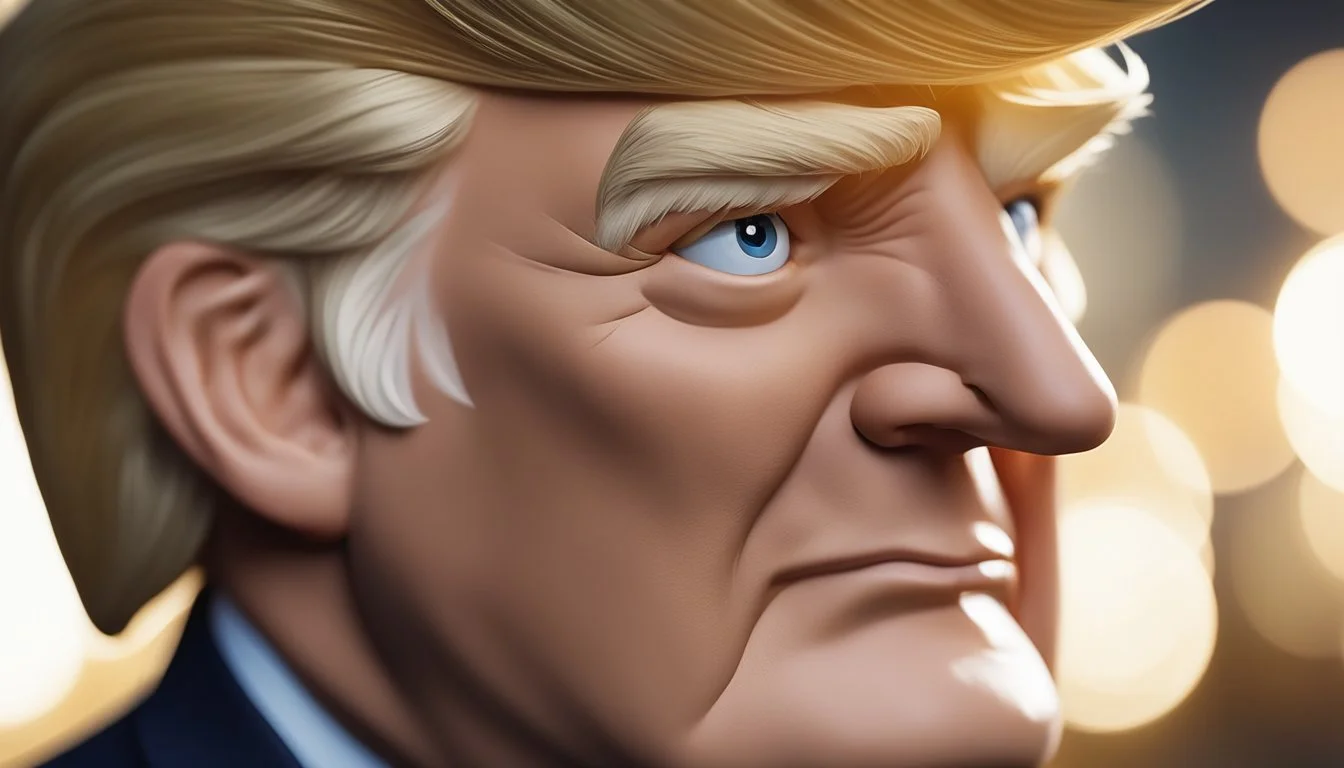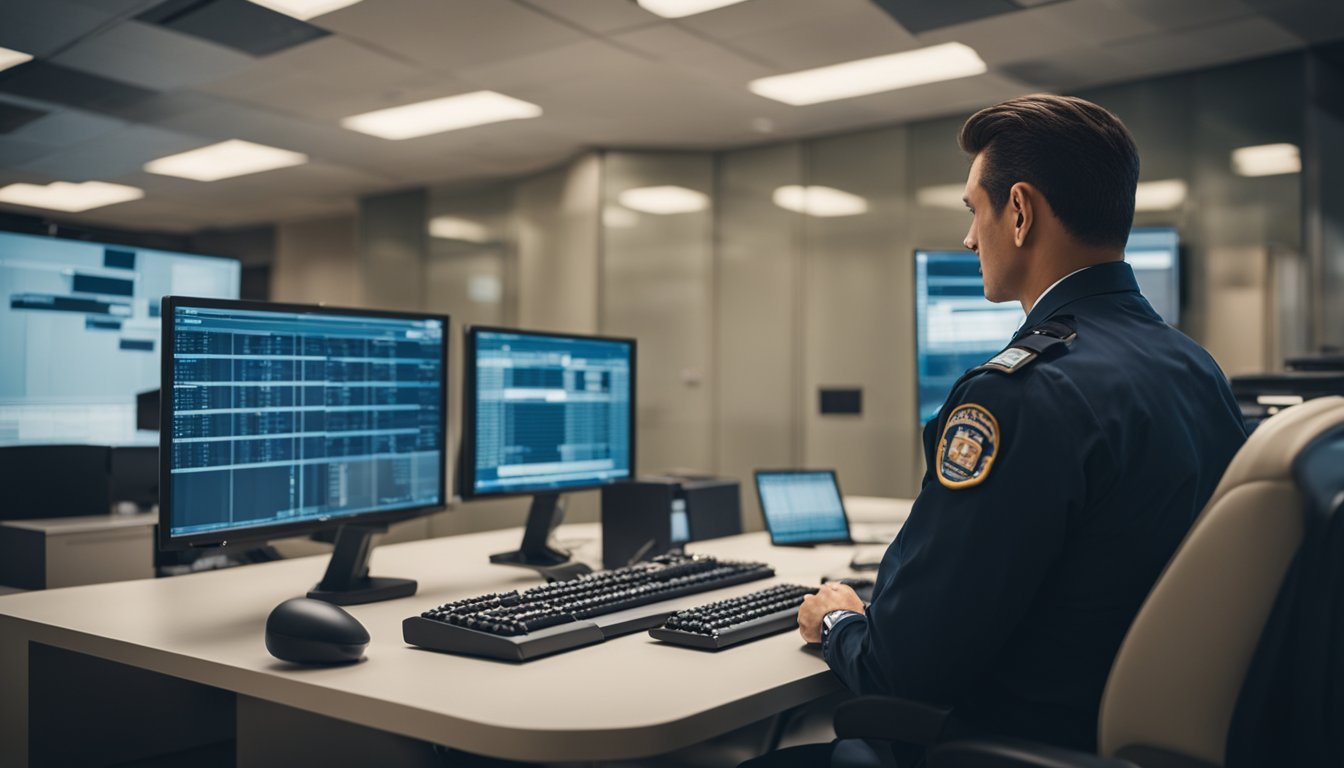Unusual Results Found in Donald Trump Ear Examination
Donald Trump's ear became a subject of intense scrutiny following an incident at a Pennsylvania rally in July 2024. The former president sustained an injury to his right ear during an apparent assassination attempt.
The FBI confirmed that a bullet struck Trump's ear, causing bleeding and visible damage. Initial reports were conflicting, but photographs showed Trump with a bandage covering the affected area for several weeks after the event.
Recent images suggest Trump's ear has healed significantly. The lack of a bandage has allowed the public to see the aftermath of the injury for the first time. This development has sparked renewed interest in the details of the incident and Trump's recovery process.
The Incident
On July 26, 2024, former President Donald Trump was shot during a campaign rally in Butler, Pennsylvania. The assassination attempt left Trump with a wound to his ear from bullet fragments.
Details of the Attempt
The gunman, identified as Thomas Crooks, used a high-powered rifle to fire shots at Trump from a nearby building. One bullet or fragments struck Trump's ear, causing visible bleeding. Witnesses reported hearing a whizzing sound moments before the shot hit its target.
Secret Service agents quickly rushed to protect Trump, shielding him and evacuating him from the stage. The crowd panicked as shots rang out, with many ducking for cover or fleeing the area.
Law enforcement officials later recovered the rifle used in the attack. The FBI confirmed that shrapnel from the bullet caused Trump's ear injury.
Chronology of Events
3:15 PM: Trump begins his speech at the Butler campaign rally.
3:42 PM: Shots fired from nearby building.
3:43 PM: Trump struck in the ear by bullet fragments.
3:44 PM: Secret Service agents rush Trump off stage.
3:46 PM: Local police secure the area and begin search for the shooter.
4:15 PM: Suspect Thomas Crooks apprehended several blocks from the scene.
4:30 PM: Trump transported to nearby hospital for treatment.
6:00 PM: FBI Director Christopher Wray issues initial statement on the incident.
Initial Response by Law Enforcement
Local police and Secret Service agents acted swiftly to secure the area and evacuate attendees. A multi-agency manhunt was immediately launched to find the shooter. Within 30 minutes, law enforcement located and arrested Thomas Crooks.
The FBI took charge of the investigation, with Director Christopher Wray personally overseeing the case. Agents combed the crime scene for evidence and interviewed witnesses. The Bureau coordinated with local authorities to enhance security measures across Butler.
Trump received immediate medical attention for his ear wound. The Secret Service implemented heightened protection protocols for the former president and his family members.
Medical Assessment
Donald Trump's ear injury from the shooting incident required immediate medical attention and evaluation. The wound's nature and potential long-term effects have been subjects of discussion among medical professionals and government officials.
Immediate Medical Actions
Trump was rushed to Butler Memorial Hospital following the shooting. Medical staff performed a CT scan to assess the extent of the injury. The scan revealed a 2 cm-wide wound to Trump's right ear, consistent with a gunshot injury. Doctors worked to clean and treat the wound, removing any potential shrapnel or bullet fragments.
A bandage was applied to protect the affected area and prevent infection. The medical team also conducted a hearing exam to determine if the injury had impacted Trump's auditory function.
Long-Term Health Consequences
The full extent of potential long-term health consequences remains uncertain. Experts suggest that injuries to the cartilaginous surface of the ear can lead to deformities or scarring. There are concerns about possible hearing loss or tinnitus resulting from the trauma.
Follow-up evaluations will be necessary to monitor healing and assess any lingering effects on Trump's hearing or balance. Reconstructive surgery may be considered if there is significant damage to the ear structure.
Official Statements and Records
Rep. Ronny Jackson, Trump's former physician and current member of the House Judiciary Committee, released a statement confirming he had reviewed Trump's medical records. Jackson verified the initial assessment of a "gunshot wound to the right ear" and agreed with the treatment provided.
The FBI issued a statement addressing the nature of Trump's injury, confirming it was caused by a bullet, either whole or fragmented. However, detailed official medical records have not been made public, leading to calls for greater transparency from media and political figures.
Congress has requested a full briefing on the incident and Trump's medical condition. The lack of comprehensive official reports has fueled ongoing speculation and debate about the exact nature and severity of the injury.
Political Repercussions
The shooting incident involving Donald Trump's ear has sparked significant political reactions across the United States. The event has prompted responses from various political actors and impacted public sentiment.
Republican Party Reactions
Leading Republican figures have rallied around Trump following the incident. Senate Minority Leader Mitch McConnell called for a thorough investigation, emphasizing the importance of protecting political candidates. Senator Lindsey Graham, a close Trump ally, demanded increased security measures for presidential hopefuls.
The Republican National Committee issued a statement condemning political violence and reaffirming support for Trump's campaign. Several GOP governors expressed solidarity, with some calling for stricter gun control measures.
Social media platforms, particularly Truth Social, saw an surge in pro-Trump messaging from Republican officials and supporters. Many framed the incident as an attack on democracy itself.
Statements from the White House and Congress
President Biden condemned the attack, calling for unity and civility in political discourse. The White House Press Secretary emphasized the administration's commitment to a fair and secure election process.
Speaker Mike Johnson convened an emergency meeting of House Republican leadership to discuss security protocols for political events. The House Judiciary Committee announced plans for hearings on protecting presidential candidates.
Democratic leaders expressed sympathy for Trump while cautioning against politicizing the incident. Some called for a reevaluation of rhetoric that could incite violence.
Impact on Electorate and Supporters
Polls conducted after the shooting showed a temporary boost in Trump's approval ratings among Republican voters. Many supporters viewed the incident as evidence of Trump's resilience and dedication to his campaign.
Campaign rallies saw increased attendance, with heightened security measures in place. Trump's team reported a surge in small-dollar donations in the days following the attack.
Some moderate voters expressed concern about the state of American politics, with surveys indicating a desire for reduced polarization. Social media analysis revealed intense debates about gun control and political violence.
The incident has reignited discussions about the safety of public figures and the tone of political discourse as the election approaches.
Personal Accounts and Public Response
The attempted assassination of Donald Trump sparked intense public interest and widespread media coverage. Conflicting accounts emerged from various sources, including Trump himself, eyewitnesses, and news organizations.
Donald Trump's Narration of the Event
Trump shared his version of events on Truth Social. He claimed the bullet "took my entire ear off" but asserted it began regrowing the next day. Trump described intermittent bleeding and swelling. He praised a "heroic father" who allegedly intervened. These statements generated significant attention and debate on social media platforms.
Witnesses and Bystanders
Eyewitness accounts varied. Some supporters at the rally reported seeing Trump struck in the upper part of his right ear. Others described chaos and confusion in the immediate aftermath. Several attendees shared photos and videos online, fueling discussions about the severity of Trump's injury.
Media Coverage and Analysis
Major news outlets like the Associated Press and New York Times investigated Trump's claims. They reported that Trump sustained a 2-centimeter wide ear wound. The FBI released a statement confirming a bullet struck Trump's ear but did not specify if it was whole or fragmented.
Media analysis focused on discrepancies between Trump's account and official reports. Photos of Trump without a bandage weeks later sparked further speculation. Some outlets criticized the spread of conspiracy theories surrounding the incident.
Security Enhancements and Investigations
Following the assassination attempt on Donald Trump, security measures were significantly bolstered and extensive investigations were launched. Law enforcement agencies worked diligently to uncover details about the incident and prevent future threats.
Protective Measures Post-Event
The Secret Service immediately enhanced its protective protocols for Trump and other high-profile individuals. Metal detectors and bag checks became mandatory at all campaign events. Additional agents were deployed to monitor crowds and secure perimeters.
Advanced surveillance technology, including facial recognition systems, was implemented at venues. Coordination between local law enforcement and federal agencies intensified to share intelligence and respond swiftly to potential threats.
The Secret Service also reviewed and upgraded their communication systems to ensure rapid response capabilities during emergencies.
FBI and Secret Service Investigations
The FBI, led by Director Christopher Wray, launched a comprehensive investigation into the assassination attempt. Agents conducted extensive interviews with witnesses and analyzed physical evidence from the scene.
Digital forensics experts examined the online activities of the shooter, Thomas Matthew Crooks, to trace potential connections or motivations. The FBI worked closely with local law enforcement to piece together Crooks' movements leading up to the event.
The Secret Service conducted an internal review of their security procedures and response during the incident. They analyzed video footage and agent positioning to identify areas for improvement in their protective strategies.
Conspiracy Theories and Misinformation
Unfounded claims and misleading narratives rapidly spread across social media platforms following the attempted assassination of Donald Trump. These conspiracy theories challenged official accounts and sowed doubt among the public.
Origin and Spread on Social Media
Conspiracy theories emerged on Truth Social and other platforms within hours of the incident. Some users falsely claimed the assassination attempt was staged to garner sympathy for Trump's campaign. Others spread baseless rumors about the shooter's motives and affiliations.
Misinformation spread rapidly through shares, retweets, and reposts. Manipulated images and out-of-context video clips fueled speculation. Fact-checkers struggled to keep pace with the volume of false claims circulating online.
Political Responses to Conspiracy Theories
Members of Congress from both parties condemned the spread of conspiracy theories. Senator Lindsey Graham urged social media companies to combat misinformation more aggressively. Vice President Harris emphasized the importance of relying on official sources.
Some politicians were criticized for amplifying unverified claims on their social media accounts. This sparked debates about the responsibility of public figures to verify information before sharing it with followers.
Law enforcement officials held press conferences to address rumors and provide verified updates. They stressed the ongoing nature of the investigation and cautioned against jumping to conclusions based on online speculation.





